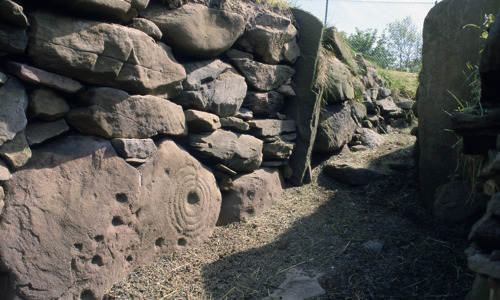History
Torr a’Chaisteal appears to be a dun. These fortified residences were common in western Scotland in the late Iron Age, about 2,000 years ago. They share some similarities with brochs, tower-like circular structures unique to Scotland.
The site was excavated by antiquarians in the 1800s. Finds included:
- animal bones: of deer, ox, boar and pig
- part of a quernstone (used to grind grain)
- pieces of haematite, or iron ore
This evidence suggests Torr a’Chaisteal was a settlement.
An Iron Age defence
Torr a’Chaisteal stands in a position of natural strength, with impressive views out to sea. On top of an isolated grassy knoll, looking out to sea, are the low stone footings of a large circular structure measuring 14m in diameter.
Its walls are 3m thick, formed of large boulders. On the landward side a substantial earthwork cuts off the knoll, providing an extra element of defence.
Duns vary in size and form, but are so prolific in the west of Scotland, it is unlikely all were residences for warlords or local chieftains. Torr a’Chaisteal is a smaller example and probably had only a single roundhouse on top, perhaps home to a prosperous local farmer.
















